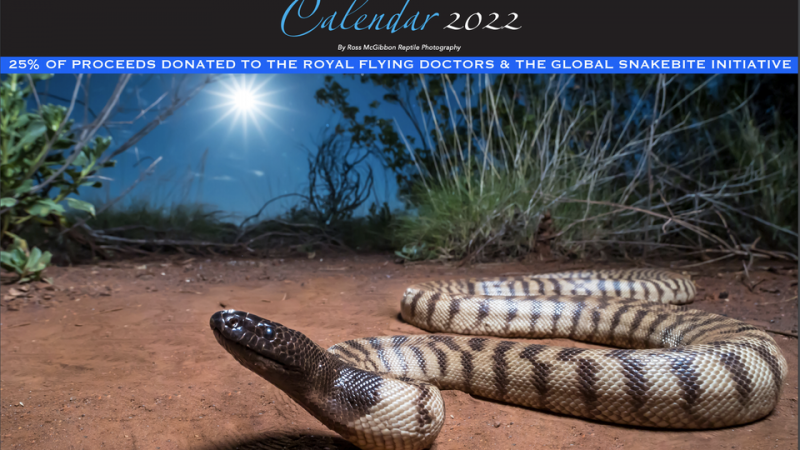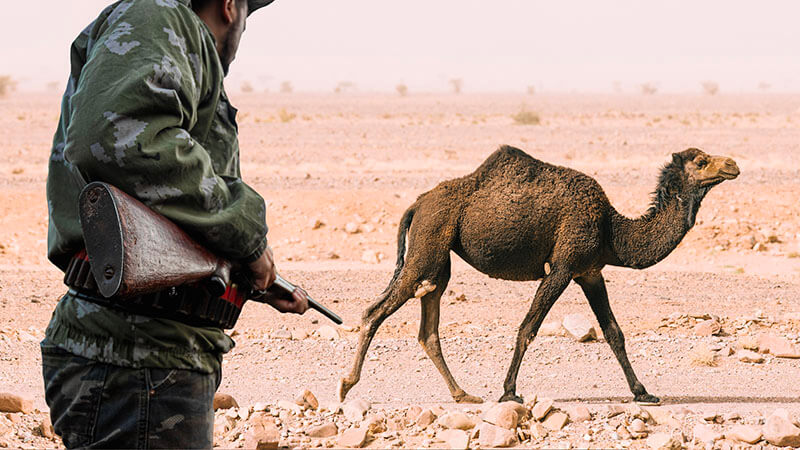
AE 1063 - INTERVIEW:
Snake 'Tails' of Adventure in the Aussie Outback with Ross McGibbon
Learn Australian English in each of these episodes of the Aussie English Podcast.
In these Aussie English Interview episodes, I get to chin-wag with different people.

In today's episode...
Happy weekend, everyone!
I got my best mate Ross McGibbon back on the podcast today!
In this 3rd part of the interview, we talk about the gripping stories behind the snake photographs.
Ross shares that he would take after styles from great reptile photographers.
When taking a reptile photo, he explains that there are particular angles to take it from because that will enable you to identify it more easily.
Join us today for a bunch of candid stories behind Ross McGibbon’s camera!
We also talk about his latest fund-raising project in which 12 of his most iconic snake photos will be put on a calendar for 2022.
25% of the proceeds will be donated to the Royal Flying Doctors Service (https://www.flyingdoctor.org.au/) and the Global Snakebite Initiative (www.facebook.com/SnakebiteInitiative).
It’s a must for the wildlife lover in you!
Don’t forget to check out Ross’ calendar at https://rmrphotography.com.au/2022-calendar/
Improve your listening skills today – listen, play, & pause this episode – and start speaking like a native English speaker!

Watch & listen to the convo!
Listen to today's episode!
This is the FREE podcast player. You can fast-forward and rewind easily as well as slow down or speed up the audio to suit your level.
If you’d like to use the Premium Podcast Player as well as get the downloadable transcripts, audio files, and videos for episodes, you can get instant access by joining the Premium Podcast membership here.
Listen to today's episode!
Use the Premium Podcast Player below to listen and read at the same time.
You can fast-forward and rewind easily as well as slow down or speed up the audio to suit your level.
Transcript of AE 1063 - Interview: Snake 'Tails' of Adventure in the Aussie Outback with Ross McGibbon
G'day, you mob. How's it going? Welcome to this episode of Aussie English, the number one place for anyone and everyone wanting to learn Australian English. Today is part three of my interview series with my mate Ross McGibbon.
He is a reptile photographer, lives over in Western Australia, near Perth, and goes on these epic trips every single year around the country, taking absolutely phenomenal photos of geckos, lizards, but primarily venomous snakes. So, today we talk about the different trips that he's been on in 2021 whilst COVID's been ravaging the rest of the continent.
WA, Western Australia has been sort of, you know, business as usual, and we go through some of the really interesting photos that he took and how he got these photos. You know, how did he set them up? How did he find these animals? So, guys, don't forget that Ross is doing a sale on his reptile calendar for 2022.
So, if you want a calendar for next year, that's full of absolutely beautiful photos of different reptiles from around Australia, get your hands on this. And don't forget that 25% of the proceeds are being donated to the Royal Flying Doctor Service that is a service in Australia that flies into remote parts of the continent to help people who get injured or get bitten by a snake like Ross was in the past.
And the Global Snakebite Initiative, which is a non-profit charitable organisation working hard on many levels to ease the burden of snakebite around the world. So, without any further ado, guys, I give you Ross McGibbon.
Just for the sake of it. But yeah, anyway. Rant over.
You were going through all of this, but you still managed to pump out a 2022 calendar of your 12 best shots for the year.
Yeah.
How much work and effort went into creating this calendar? You know, is it something that you can ever really calculate or summarise?
Well, to put it into perspective, first, I have to go out and get the shots, so there's thousands of dollars, days, weeks out there in the wild photographing and, you know, I would do that regardless of selling any prints, any calendars. I would do that for me and my own collection. As you can see, I got my images up on my wall everywhere. People come into my room and...
You see the one behind his head is actually on the front of a book.
I'm going to give you a little pan. That's my three taipan species in Australia. The middle one is the one I got in Australian Geographic for. This is actually in the calendar.
Is that a dugite?
Nup, this is a spotted mulga snake, and they only occur in kind of the Murchison and northern Goldfield's regions of Western Australia.
To explain these photos for people who are listening and not watching the video, and obviously you can go and check out the video, just go to the website and you'll see it there with the podcast. But Ross kind of takes different style photos of these animals from your average reptile photographer. I remember growing up and reading, I think it's Cogger, right. Cogger...
Yeah.
...Is the surname of the guy who pretty much wrote the book on literally on Australian reptiles. So, he has all the photos of the different lizards...
The bible.
...Right. Yeah. So, there's- You've got amphibians in there and you've got reptiles in there, and so you can see the distributions, what they look like. But all the photos tend to be sort of like from above looking down straight onto the animal or maybe a distant shot where they've kind of, you know, used a zoom lens to be able to get, you know, say, a venomous snake.
Ross, on the other hand, kind of gets right up into the face of the animal like literally with a wide-angle lens, but gives you so much more context in terms of the environment in which the animal's in. But in order to what do the animal justice, you have to use a wide-angle lens so that you get the entire animal in the photo big.
But you also get all of the background, you know, usually trees and dirt and rocks and sunsets or sunrises. So, it's- They are phenomenal photos. Are there any others that- Any other Australians you see going around taking these kinds of photos?
Yeah. And to be honest, I wasn't the one who invented wide angle photography for reptiles...
Yeah.
...You know, there were other photographers dabbling in wide angle photography when I started, and I remember looking at what was out there and most reptile photographers are just taking what we call identification shots. And that's what you're describing.
Yeah.
If you open any reptile field guide, you'll see a close- You'll see a snake curled up and you can hopefully see its tail and its head...
Yeah.
...And it's taken from a 45-degree angle, and that's basically called an identification shot. And that's great for identifying the diagnostics of that snake. But because I had a passion for photography that predated starting with photographing reptiles, probably the style that I liked the most was landscape photography. I just thought landscape photography was the most beautiful.
And if there was no reptiles in the world or wildlife, I'd be doing landscape photography because it's essentially the same thing. You're out there in nature travelling for your passion, going to places that you would never usually go unless you're looking for something or trying to find the perfect shot.
It's just that I have this passion for reptiles dating back from when I was a kid, so I tied all of it in together. And like I said, I wasn't the first person who invented wide angle photography with reptiles.
But I thought to myself, imagine if I could get a landscape style shot with the reptile in it, and that's the formula that I go for. And yeah, I've just been quite successful at it, my eye for photography really helps me, but I'm able to tie in all the reptile stuff as well. Because I am a venomous snake handler, I can get close to them, I can read their behaviour. So...
Most of the time.
Most of the time. Yeah.
Except when they're cheeky and give you a little nip.
Yeah, well, that's happened a total of three times, and only one of those was a dangerously venomous snake and it wasn't during photography. So, I boast a, you know, a no bite venomous snake record with photography.
It was just the fact that I was trying to get a small snake off the road on a hot night and successfully did it the first time, it came back on the road, and I hurried to grab and yeah, the rest is history. If anyone wants to know more about that story, just head over to my social media and...
We've talked about it previously on the podcast, I think, too, yeah.
Yeah, I think it might have been one of our first or second episodes we talked about that.
We'll get back to the calendar. But what does it actually feel like to be bitten by a venomous snake? I mean, not necessarily the- I mean, you can talk about the emotion of it because I'm sure you shit yourself soon afterwards. But do you actually feel it?
Yeah. So, some snakes have venom that induces pain and others don't. So, black snake like the red belly black and the tiger snake- Well, tiger snake's not a black snake. But the tiger snake and black snakes, they have painful venom because it actually starts to eat away at some of the tissue, you can get local necrosis.
Not anything compared to like rattlesnakes and some of the vipers overseas. But you can get local necrosis with black snakes just because they got properties in their venom that destroys tissue.
Yeah.
And that's painful. So, when I got bitten, it was by a mulga snake, which is a black snake, and within about 30 seconds, I started to notice pain. So, that's how you can- That's one way you know that you haven't received a dry bite...
Yeah.
...Because I knew that snake had painful venom, and if I hadn't have felt pain, the onset of pain, I would have just kept going about my business. But that's me having the prior knowledge to be able to do that, I wouldn't recommend anyone else ever try and wait out a bite. If you think you've been bitten, get to medical attention.
Yeah, far out. Anyway, so back to this year's, well, the coming years calendar. Do you want to mention some of the animals that you got in here and perhaps tell us some of the interesting stories about how you ended up finding them, you know? Were there any that were really, really difficult to find?
Any, what would you say, serendipitous events where they just, "woah", you know, "there's the one I was after the whole time. I've been looking for months and then boom, as soon as I went home, he was in my garden", you know?
Well, look, I'll start with the cover shot and...
This cover shot is of the black headed python, and this literally looks like my pet snake Kenny from back in the day. So, yeah, phenomenal. And this is at night by the looks of it.
So, this is at night, and I'd been working on figuring out my long exposure, night time shots, and it's very hard to do. It's okay- It's very easy to do if you don't have animals in the picture.
If there's no movement. Yeah.
Trying to do it with a snake, I needed a few seconds where the snake sat completely still and luckily it was a fairly cool night, there wasn't much moving. Usually I would be- I was actually looking for a death adder on this night, but there wasn't anything moving, and the moon was starting to rise. And not many people know this, but generally speaking, with a full moon, there's less nocturnal reptile activity.
Because they can be seen, right?
They can be seen, you know, they prefer under the cover of darkness, and there is a connection between moon phases and activity with certain species. But, you know, no one can really- No one's really fig- Science hasn't really figured it out yet. They just know that there's generally less activity on a moonlit night. So, when I found this python earlier on in the night, I was like, you know what?
I'm probably not going to find my death adder tonight because it's crap conditions. I'm just going to spend the time and just get a nice shot of this black headed python because I just wanted to represent it at night. I've got, you know, dusk shots of this snake where I've got the sun in the background and it's just going down.
And I just didn't have any of night, so I thought I'd do this one, and it actually turned out to be one of my best photos yet. I nailed the moon in the background, and the snake did give me that three seconds where it stayed still and...
Which is impressive for these guys. The one I always had moved a lot, so.
Yeah, it did move a lot, but there was a moment there where it just sort of chilled out and calmed down, and I was able to fire the flash, which freezes the frame. And then as soon as that flash goes off, then you've got the long exposure just soaking up the ambient light and that moon. And that's- And then if the snake moved after that flash went off, it didn't matter.
So, all I needed was a couple of seconds and this shot was my first, like, really successful one at that. And it actually got the attention of Nat Geo for the first time in my photographic career. They shared this on their Instagram, so...
Nice work.
Yeah, it was pretty cool to get to mix it with the guys that get the attention of- And it's even harder for reptile photographers because, you know, generally people don't care too much about animals that aren't cute and cuddly. So, you know, you've got- You're already handicapped as a reptile photographer, so it's even more of a feed if you get any recognition for your work.
So, that was really cool. The other one was the spotted mulga snake, and because I had success with the- So, we'll go to April...
So, the spotted mulga snake, this is the photo that you have up on the wall there that you just showed me, too, right?
Yeah, this is probably a little bit clearer.
It's almost like a horror scene, you know, you expect to hear in the background (wolf howl).
Yeah...
...There's fog, the moon, there's these sort of jagged sticks across the front of the moon, so.
It's like the werewolf is about to come out, you know, it's like- But you've got this- And what I love about this shot is it just so happened that the moon with the cloud cover kind of matches the snake's colour. So, it's a really cool, moody shot. You haven't got the Big Moon star like the other one because it wasn't a clear night...
Yeah.
...That moon coming through the clouds and that was really cool to get. And again, just a really cooperative snake after about...
You even managed to nail it when it's- The flash has obviously gone off as it's done a tongue lick. So, the tongue is coming out of its mouth, you must have been so pumped for that.
I lost it. Yeah, I lost it. When I reviewed my images after the 30 second shutter speed I, you know, because you're sitting there waiting for 30 seconds to pass. It's like the longest 30 seconds of your life because you don't know if- You can't put on any external light, so you don't know if that snake is buggered off in that 30 seconds, either.
So, it was the longest 30 seconds of my life, and when I looked at the camera I got the tongue flick as well, which is super rare.
I think we love that as biologists, right, or as wildlife photographers, because you just love- It puts so much more life in photos when it's not just the animal sort of dead still standing there. You know, when you actually have it making some movement, doing something, interacting with the environment, it sort of tells more of a story. And so...
Yeah.
...It isn't same with a photo like that where the background, the scenery sets the scene, but then the image is almost alive because you can see this tongue outside of the snake's mouth. And you know that that's a, you know, really rapid movement. So, that's insane that you- He was probably sniffing you, right? He would have been like, what is this thing in front of me?
I was about to say that, so they're, you know, they're picking up the scent and just that's one of their sensory ways they can sort of pick out whether you're a known predator to them or not. Because they know something's there and something's in front of them, but they don't know what you are.
So, a lot of the time they're doing that constant tongue flicking, especially every time you move, they're sort of picking up on your movement and they'll do the tongue flick, but.
It's nuts, isn't it? And I think from memory, goannas are actually more closely related to snakes than they are to say skinks or other lizards. So, snakes are effectively lizards, they're in the same group of animals they just have no legs. And so, we always think they're a different group, but they're actually in there. And both goannas and snakes have forked tongues because they use it for smelling.
And the crazy thing about that right is that they use- They have- Because it's forked, it's directional. So, if they get a strong scent on one side as opposed to the other, they know, okay, the preys in that direction.
Yeah, it's like a homing beacon...
Yeah.
...Home in on the direction left or right. If it's stronger on the right, they go to the right. And yeah, that's how they hunt and also find females during mating season. They'll pick up their scent trails and, yeah, it's really interesting...
I think- What's the organ? There's an organ in the top of the mouth, right? As opposed to a nose. Is it Jacobson?
Jacobson's organ.
Jacobson's organ.
And it's an organ in the roof of the mouth. So, effectively, the tongue comes out, it has receptors on each end of the tongue. When they come back in, that is waved in front of the Jacobson's organ, and then the Jacobson's organ essentially smells or tells the brain the information.
And yeah, that's how it works, but remember all the old wife's tales about, you know, forked tongues and that being the devil and all this stuff and like- It's crazy, you know, it's like, science.
Well, they're just such cool, adapted animals, right. You're just like, it is fucked when an animal can get rid of its limbs, and evolution is selected for that because it's clearly better off without the limbs, right. The legs were getting in its way.
They're a hindrance through- You know, and if people think that that's, you know, alien, I mean, it is fairly alien, and that's probably why people are so scared of snakes because they're just so different. But it's also why they're so fascinating.
And if you've lost all your limbs and you can still- Like there are snakes that glide and essentially fly, they'll jump, leap out of a tree, flatten their ventral scales out into a dome and then catch the wind and glide down to the ground or to another tree. You know, there's snakes that- Obviously sea snakes, they've developed their paddle like tail so that they can swim through the water more efficiently.
So, they've developed adaptations to every single niche, you know, the air. There's burrowing snakes that live underground. There's- They're just everywhere and they've been able to adapt to every different habitat and niche. And that's another thing that just makes them so fascinating.
And quickly too, right, I think there are relatively- What are they, 10 million years? I think it's like only around 10 million years that that group of organisms has been around, snakes have been around. Which is relatively recent when you think something like the whale, you know, or whales have been around for 30-plus million years.
You know, it's taken that long for them to evolve into the different whales and dolphins and porpoises that we see. Snakes are much younger than them, I believe. And so, for them to have spread throughout the world and have just dominated pretty much every one of these niches, except maybe, you know, Antarctica is just insane.
Yeah, and Ireland.
And Ireland, there's none there? Don't they have a little viper or something?
Look, I don't think they have any snakes in Ireland, but the UK has about five species.
Yeah.
Yeah, they've got a viper and a couple of grass snakes. And yeah, I can't remember exactly all five off the top of my head, but... (both talking)
...Watching the TV show Vikings, right when Ragnar gets thrown into a pit of snakes, which is one of these things, I think Ragnar existed, but they don't know whether or not that actually happened. And your kind of like, what snakes?
Where did you get all the snakes from?
He just had them on hand.
Yeah, they do our head in those scenes...
Yeah.
...If you're actually a reptile enthusiast because they're all these like large overweight fat boa constrictors and Burmese pythons and like, they've just cleaned out somebody's collection, dumped them all in a pit, and then, you know, you've got someone game enough to sort of sit in there with them. But they're all fat, overweight, captive snakes in those...
That are well-fed and not moving and not showing any signs of aggression at all.
Yeah, or they're a mixture of captive snakes and CGI snakes just to sort of give it that, you know, full looking effect. And...
Oh man, don't- I watched the film Anaconda a while ago and I was just like, I can't handle this anymore.
Yeah...
It seemed amazing when I was a- Before I was a biologist and then now with a, you know, a PhD, I'm just like, I can't handle this shit.
Nup. Nup. Any of that stuff. Don't even get me started on snakes on a plane and all that crap. Now, it really grinds my gears when I see wildlife is presented really badly in movies because it just adds so much to perceived fear.
And if that's people's only exposure to that animal, that's why we have so many people that are scared shitless of crocodiles, sharks, bears, snakes. It's like if you don't want to live in fear learn more about them because...
I've talked about that with you before, and I think I did some recent videos breaking down the 10 top dangerous animals in Australia, and I'm like, all of these animals they kept saying, you know, here is the stone fish. And you're like, what? It's never killed anyone. And then they'll go on to say, despite having never killed anyone, it's really venomous.
And you're like, yeah, but you said the most dangerous, like how you quantifying this? It has venom that isn't even deadly. It's just painful.
Yeah. People need to listen to the words being used and especially on those, if you start hearing "Dun Dun Dun" and ominous music and stuff when it's a wildlife documentary...
Yeah.
...Turn it off. Like if it's- You can pretty much pick up on the fear-based narrative these days. Like if you're looking at 72 deadly animals, blah, blah, you've really got a- Like if you're interested in animals, watch that, but really start to sift out the crap and try and get your- You know, they have an agenda to entertain, and fear is one of those people that- One of those things that gets people watching.
So, for many years, people have absorbed the fear-based narrative. But it's time for a change now, and that's why, you know, a lot of YouTube channels are popping up and that's why I focus a lot on education and awareness. And look, I might not get the following and the engagement that the fear-based stuff has.
But at least it will teach someone something useful and it will last the test of time, not be some easily digestible crap that they watch for entertainment and then forget next week.
Well, did you see Coyote Peterson? Is that like, into the wild or whatever? And you're like, ugh, this guy. But at least he wasn't ever doing the fear-based stuff. I think he shot to fame. His channel on YouTube has like 20 million subscribers. It's insane.
Yeah.
But he got all those- That following from going around the world and getting stung by the most painful insects...
Yeah.
...So, he was counting down from ten to one.
...His production. Yeah, his production company made him do that, like they write the story and they hired him as the talent, basically. Because he's an eccentric guy, he's loud, you know, he's...
He's like an American Steve Irwin.
Yeah, yeah, you know, and that's what they, you know, they've got him dressed up in this ridiculous kit, you know, and they've got him going around doing things that incite shock. So, you need to shock the audience.
Yeah.
And I understand that that is a part of TV, and that is why I haven't gone down that route and a lot of my peers haven't gone down that route. And honestly, if you don't want to- If you don't want to be told what to do as a talent, like they hire you and then you get basically, you don't get to do your own show.
Yeah.
So, that's why a lot of people are going stuff TV, I'll do my own YouTube. And you might not get anywhere near the fame or whatever, but it's about putting out content that's real and that people are going to learn something from it. I think that's the shift that it's going.
We've talked about this, I think, in private right, where there's a few people out there, especially in Australia, that are kind of just keep taking things to more and more extreme levels in terms of the feats that they'll get up. There was a certain person who is roller skating through the desert trying to catch a taipan. And you're just like, what are you doing, dude?
Like, and, you know, you can't just be like in the video doing this incredibly stupid and dangerous thing that's encouraging other people to do it and say a few animal facts and be like, well, I'm educating the public. You know, I'm like, there's a lot more responsibility that goes into that. You're trying to be seen by, you know, a production company is going to pick you up and then, you know, the money will flow in.
Yeah.
So, it is a sad thing. Anyway...
...You know? Yeah, your right, you go.
I was going to say we should get back to your calendar. Going off on tangents.
I was telling stories about the calendar. Look, I'm just going to go through and pick the main- Because this is probably my best one yet because I'm just getting better and better each year, and this is the next one I'll probably talk about. I mean, aesthetically, this is exactly what I'm talking about when I say I want to get, you know, a beautiful reptile with the background and beautiful scenery.
So, this is a southwestern carpet python, and it's photographed almost on the Nullarbor, right down the bottom of Western Australia...
So, there's this- For those of you listening to this, there's this beautiful- Is it an acacia tree or some kind of eucalypt that's like fallen over and then swoops up and then down and along the ground? And the snake's kind of positioned coming towards the camera down the log. And it's this beautiful yellow snake. And then you've got the sun creeping in sort of coming through the log with this dramatic sky with the clouds. It's crazy.
Yeah, if I was to turn around, you'll see the track that I found this snake on. And I was just cruising along a track that was right down probably only 10 or 20 km from the coastal cliffs down the bottom of Australia. And cruising along, and right at the end of the day, this snake was like spread out a little bit on the track, soaking up the sun.
Because you can imagine if there's vegetation either side of the track, a snake will need to either get up high, like how I photographed it and sit up high. But that can also expose them to predators like hawks and eagles...
Yeah.
...Or they might choose to just slither out of the vegetation and bask on the road because it's an open space and they can get direct sunlight. So, I've basically just taken it off the road and sat it on that fallen acacia tree and been able to nail the sunset in the background. And just so lucky, it wasn't a clear day, and it was getting that cloud, you know, just super lucky. And...
Do you find it harder to photograph pythons or venomous snakes like elapids? Like, do they tend to be very, very different in terms of their how each behave? Or is the diversity of behaviour and sort of personalities within each group, you know, it overlaps?
Yeah, I think there's pros and cons to both species, like venomous snakes, obviously, you've got to be on your game, and you've got to keep one eye on the snake and one eye through your viewfinder. And your only, you know, you're only just taking your eye off the snake to look in the viewfinder and there's just a split second where you're not moving, you're not moving at all.
You're just watching that snake because if he comes at you, you've got to get out of the way quickly. But with a python, you don't really have to worry about that. That's like a weight off my shoulders. But some smaller pythons, they would just not stop moving, like they will not- They would just keep- We call it treadmilling, so they just... (static) ...And you can't get them to sit still for one second, just to snap off a shot.
And that can be a really frustrating scenario. So, yeah, small pythons like, you know, your children's pythons and your spotted pythons and that, they are usually a nightmare to photograph.
So, you just need lots of light, and to just put it on, you know, machine gun mode where you just (burst mode sound effect) And just hope you get one that, you know, has the tongue out.
Well, here's my problem, if you don't find them during the day and most pythons are out at night, that's when they come out to hunt. You can't do that. So, I can only use a shutter speed up to about- And look there are shutters that will keep up with your camera. But it's just not what I have in my set up at the moment, and usually it's just one shot at a time, like, and you need that. You just need that second for them just to sit...
Are they all just blurry the ones where you're just like, it's moving around and you're just like, God, damn it. You know?
Yeah. Well, this is, you know, this is a (static) You guys get to see the times where it's successful, but you don't get to see all the other times where- you can find them easy or I don't have time to photograph it or- Just for whatever you fail at the mission. So, every time you see one of these shots that I've actually nailed, it's like there's probably five that I haven't or...
Just five? Man, for me, I would be having thousands. I would go out there whenever I was doing bird photography and I would shoot probably 2,000 shots and maybe 20 or 30 were like, you know, accep- It'd be like 1%.
Yeah, yeah. Look, if you're talking shots, then, you know, to get that shot, you might take 50 or 100...
Yeah.
...But yeah, the better I get at my craft, the lower that number comes down to. And that's just- It's just putting in the time and the practise.
So, it seems...
How are we going for time, mate?
Good, we can finish up shortly. Do you want to do one more? It seems like this year's calendar has a lot more other herps going on. I mean, well, not herps, just reptiles. They're- One of my favourite shots here is of the pygmy goanna, I think or the- Is it the pygmy mulga? Pygmy mulga monitor? Yeah, that's an insane shot. It looks like it's on an old fence post or something, but you've got Uluru in the background.
That's actually- Yeah, it's- Yeah, that's actually a dead tree.
Wow.
But yeah, it does look like a fence post, but just the bulge in it makes it look like a fence post. But yeah, Uluru in the background. So, that one there is- I was just lucky enough to be at one of the viewing places of Uluru, and I found this little goanna scurrying from bush to bush, and some- What alerted me to his presence was some birds were harassing him.
Oh okay. How big is he? In the photo he looks tiny. Was he the kind of goanna that can just fit in your hand or?
So, without the tail, the body would have been maybe from that knuckle to here.
Oh wow. Okay.
Like, I'm only talking like six inches probably long, if that...
It's insane they get that small.
...And then, yeah, tail- It would have been a 20-centimetre animal...
Yeah.
...From tip to tail.
Wow.
But yes, some noisy miners were just harassing the hell out of it, and I knew that that usually means it's a reptile and half the time, it usually means it's a snake. Because in my snake hatching days on the Sunshine Coast, you would often rock up to backyards where birds are just swooping and the noisy miners, it was exactly the same bird and same alert.
And they're just basically harassing the goannas because the goannas get up in their nest and eat their eggs, and probably even their chicks if they're small enough. So, yeah, I shooed the birds off and sat him up on that post to get the photo with Uluru in the background, because you're just not going to pass up an opportunity to photograph that animal in Uluru.
Yeah. And you instantly know, you look at the photo and you're like, I know within what a few kilometres of where that is effectively like...
Yeah.
...Just as a result of the background.
Yeah. So, yeah, I love that shot, man, I'm really, really stoked with that one. And yeah, this year's been a good year and that was during that- I wouldn't have got that shot if I had gone to South Australia. Remember, I was saying that I couldn't because of COVID. So, that was one of the shots- Yeah, that was one of the shots, so I ended up going to Uluru for the fifth time instead.
I'm still yet to go. I've got to go one of these- I'll have to harass you and be like, when's the next time you going there? Well, when my kids have grown up and moved out.
Mate, when you can, I will take you out. I still owe you that, and...
That'd be amazing.
...I am going to come your way and we are going to tee something up, but I've- Every time I've thought about it, we're- You're in lockdown, so.
There's that enjoy your freedom, enjoy your freedom. All right. So, where can people get their hands on the calendar? And you should mention 25% of the proceeds are going to some really good causes, right?
Yeah. So, it's not just a calendar to promote my work, I also raise money for the Royal Flying Doctor Service who saved my sorry arse when I got bitten by a snake, a thousand km from antivenom.
And I've also recently in this years and last year's brought on the Global Snakebite Initiative, and they're an organisation dedicated to basically trying to tackle the burden of snakebite around the world on multi levels. Like, educating village people, providing them with resources, training snake catchers, getting hospitals antivenom, providing snakebite training for staff at hospitals.
They've really got their fingers in a lot of pies around the world and in countries that suffer from snake bite far more than us. Like, we have on average 2 deaths a year and somewhere like India is up around the 45,000 to 50,000 a year. And then times that by three, and that's what they estimate the people that are maimed from snakebite. So, they don't die, but they have to lose a limb or...
Just in India too, right?
That's just in India. Then you've got Africa and South America, and it's a huge problem. And the national- Sorry, the WHO, World Health Organisation have put snakebite as a neglected tropical disease. They've put it right up there in the rankings.
And there's been some really important people lobby for this and to get the world to take notice of it because, you know, you're looking at around 140,000 deaths a year, that's just deaths a year worldwide. So, it's a huge problem, it's killing a lot more people than some of the more well-known things. And yeah, the Global Snakebite Initiative are helping to tackle that problem worldwide.
So, the reason why I choose both is to help Australians with the RFDS because they provide an amazing service, and then also go international as well and help the Global Snakebite Initiative. So, that's for $35, including postage from my website. You can get it at RMRPhotography.com.au.
Yeah. RMRPhotography.com.au, guys, get your hands on it. And, you know, it is an insanely low priced too for such quality photos. For some of the other calendars I've seen out there from artists and everything are always upwards of $100. So, it's an amazing cause and it's amazing set of photos. Get your hands on it, guys. And have you got any idea of what's coming out for 2023? How are you going to top this year's? Or this coming years?
Oh man. So, I have been itching- Now that the weather's warmed up, I've been itching to get out there. So, come November, I think like third week in November, I'm off for about three weeks. And basically, Plan A is to get to Queensland, see my family and do some photography in Queensland.
And Plan B might be South Australia if I can't get to Queensland. So, it's all COVID depending. What do we need to do to get you to get a rat or a frog in the calendar next year, like a hopping mouse from- notomys, right? The hopping mice in the central desert there or one of those burrowing frogs or something?
I could tell you exactly how that will end up in my calendar and it will only end up in my calendar if a snake is half eating it. Because unfortunately, look, if you like cute and cuddly animals, there's other calendars out there for you.
But if you are into reptiles or you got, you know, if you've got family members or kids, like kids love them. And that's the beauty about kids, it's that they love all these animals until they're taught not to. So yeah, they make great gifts for them, so.
Awesome. Well, man, Ross, thanks so much for coming on. Where can people find out more about what you do? Where can they follow you on the social medias?
Yep, so just look up, Ross McGibbon reptile photography, and I'm sure you'll put all my socials in the show notes, but you can get me on Facebook, Instagram and YouTube. And if you're a photographer and you're into Flickr, Flickr is like the professional photographer's version of Instagram, and I've got all my work on Flickr, so you can go through and look at every single photo if you want.
Yeah, awesome. And go check out the previous episodes where Ross has been on, you know, dropping knowledge bombs left, right and centre.
Yeah, thanks, mate. Thanks for having me on again. It's always a pleasure to chat to you, mate, and yeah, hopefully we get to hang in person as soon as this COVID stuff blows over.
Let's do it. Anyway, thanks, mate. See you next time.
Thanks, mate. Catch ya.
All right. So, that's it for today's episode, guys. Thanks so much for joining me. Don't forget to go and grab yourself a copy of Ross's calendar. He's doing this as a fundraising event remember, trying to raise money to help people who get in trouble in Australia and need the Royal Flying Doctor service or people overseas who get bitten by snakes and need some help as well, whether it's treatment, antivenom, all that sort of stuff.
So, you can go and get it from RMRPhotography.com.au, and remember, it's a bargain. It's just $35, and you're going to get 12 absolutely phenomenal photos from around the country in Australia of different animals. A lot of them really venomous snakes. So, anyway, guys, thanks again. Make sure to check out the other episodes in this series when they come out, and I'll see you next time.

Listen & Read with the Premium Podcast Player
Get more out of every episode!

Premium Podcast members get access to...
- All 900+ podcast episodes including member-only episodes
- Member-only episode video lessons
- Downloadable transcript PDFs & audio files for every episode

Recent Episodes:


AE 1299 – Pete’s 2c: Do You Ring, Call, or Dial Someone on the Phone in Australia?

AE 1298 – Learn English with a Short Story: Day at the Beach

AE 1297 – The Goss: How ‘Dropping In’ Culture Has Changed in Australia

AE 1296 – The Goss: Gorilla Glasses & Dad’s Crazy Zoo Stories – MEMBERS ONLY

AE 1295 – The Goss: Australia’s Most & Least Ethical Jobs

AE 1294 – The Goss: Australia Just Had the Best Aurora in 500 Years!

AE 1293 – The Goss: Should Aussie Schools Ban Homework?

AE 1292 – How Aussie Do Asian Australians Feel? r_AskAnAustralian

Share

Join my 5-Day FREE English Course!
Complete this 5-day course and learn how to study effectively with podcasts in order to level up your English quickly whilst having fun!

Join my 5-Day FREE English Course!
Complete this 5-day course and learn how to study effectively with podcasts in order to level up your English quickly whilst having fun!


Want to improve a specific area of your English quickly and enjoyably?
Check out my series of Aussie English Courses.
English pronunciation, use of phrasal verbs, spoken English, and listening skills!

Have you got the Aussie English app?
Listen to all your favourite episodes of the Aussie English Podcast on the official AE app.
Download it for FREE below!



Want to improve a specific area of your English quickly and enjoyably?
Check out my series of Aussie English Courses.
English pronunciation, use of phrasal verbs, spoken English, and listening skills!
Leave a comment below & practice your English!







Responses